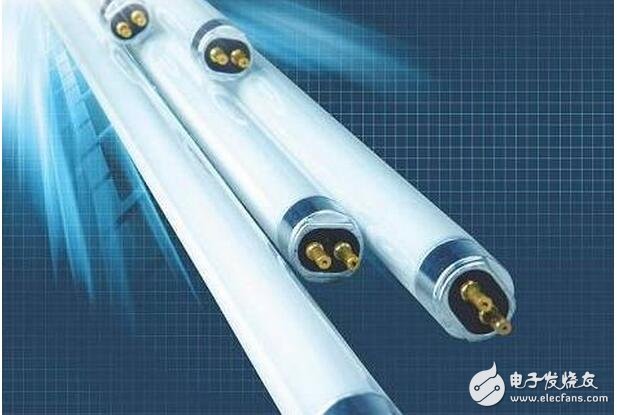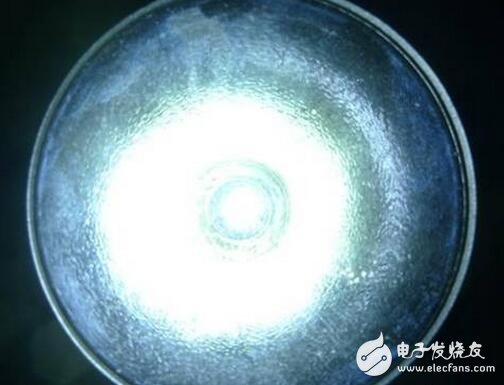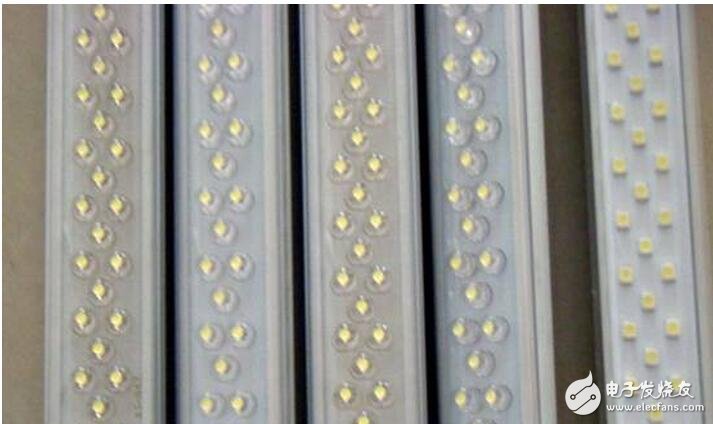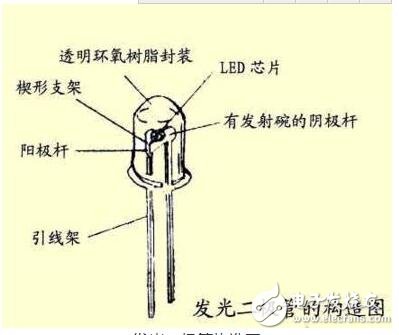
Privacy statement: Your privacy is very important to Us. Our company promises not to disclose your personal information to any external company with out your explicit permission.
We spent the period of liquid crystal instead of flat, but the LCD of that period, in terms of size and power consumption, is actually not so good. An ordinary 15-inch LCD has a power consumption of 30W, although it is flat compared to the time. Still low. However, the new LED LCDs now use more energy-efficient LEDs and are more energy efficient. Power consumption continues to drop by about 50%, and LCDs can be made thinner. However, what is his working principle? Briefly describe the difference between the two
Display devices, like humans, are undergoing evolution, from convex to flat, to CCFL to large-size LEDs. Almost as with Moore's Law, a cycle of innovation will doubling performance, 19-inch LED power consumption has dropped to 15W, and the 15-inch flat contrast of that year is a world of difference.

Nowadays, due to the influence of power consumption, even the large-size display such as 26 and 27 inches can still achieve power consumption of about 30W, and this power consumption is placed on the CCFL lamp. It is estimated that it has already broken 100. (eight tubes), so many lamp life is also a problem, but what is the difference between the two? To understand this difference, we start with the principle. In fact, the lamp used in our display is close to the principle of the lamp in the general family.

Lamp
CCFL, the full name of Cold Cathode Fluorescent Lamp cold cathode fluorescent tube. An inert gas Ne+Ar mixed gas containing a trace amount of mercury vapor (several mg) is enclosed in a glass tube, and a phosphor is coated on the inner wall of the glass, and a high-voltage high-frequency electric field is applied between the two electrodes, and the mercury vapor is here. When the electric field is excited, the effect of luminescence is generated, and ultraviolet light with a wavelength of 253.7 nm is emitted, while the phosphor atoms of the inner wall are lifted by ultraviolet light to raise the energy level. When the atom is reversed to the low energy level, visible light is emitted. The wavelength is determined by the properties of the phosphor material). Due to the low manufacturing cost, high power, high brightness, low energy consumption and so on. However, the inert gas has a certain life span, so after a long time of use, the lamp will be yellow or even burned.
But many things are relative. After the LEDs come out, all the advantages of CCFL have become shortcomings, life, performance, energy consumption, are all overtaken by LED. The only advantage is the brightness and cost. From the beginning of 2009 to the present 12 years, the LED machine cost and CCFL have been almost the same (on the LCD) and the CCFL lamp, the cost is down to the level of 1 yuan. However, what is the advantage of LEDs? Take the flashlight as an example.

Flashlight
This is a typical LED lamp bead, 10W power, conversion efficiency of up to 90%, can emit the brightest light of 960 lumens
Why can such a small tube emit such a large brightness? Let's talk about it.

led
On the liquid crystal, the LED used is also such a tube, but the power will drop a little.
One end of the LED lamp wafer is attached to a bracket, one end is a negative pole, and the other end is connected to the positive pole of the power source, so that the entire wafer is encapsulated by epoxy resin. The semiconductor wafer consists of two parts, one part is a P-type semiconductor, in which the hole dominates, and the other end is an N-type semiconductor, which is mainly electrons here. But when the two semiconductors are connected, they form a PN junction. When a current is applied to the wafer through the wire, the electrons are pushed toward the P region. In the P region, electrons recombine with the holes, and then the energy is emitted in the form of photons. This is the principle of LED illumination. The wavelength of light, which is the color of light, is determined by the material that forms the PN junction.

LED structure diagram
Since the inert gas protection is not required, the service life of the LED is as high as 100,000 hours, and there is no aging yellowing due to the change of the inert gas like CCF1. Due to the use of the boosting principle, the voltage efficiency is improved. Generally speaking, the performance of the LED is as high as 90%, which is much higher than the 40% of the CCFL, thus obtaining a smaller volume and a more energy-saving title. Similarly, no The need for inert gas protection also increases its service life.
Summary: The display has experienced 2 revolutions in recent years. The first time is the liquid crystal instead of flat level, the power consumption has dropped by about 50%, and the second time occurs when the LED replaces the CCFL. The lower power consumption makes the large-area liquid crystal G2631, even if the area reaches 26 inches, but the power consumption can be controlled at around 30W, while also having a stronger life and relatively similar cost. The design principle of the LED screen is to "push behind the scenes"!The LED display is a flat display screen composed of a light-emitting diode dot matrix module or a pixel unit. Because of its high luminous efficiency, long service life, flexible configuration, rich colors and strong adaptability to indoor and outdoor environments, since the late 1980s, with the continuous improvement of LED manufacturing technology, it has been widely used abroad. Applications.
This topic describes the development and application of LED displays.
The LED display is a flat display screen composed of a light-emitting diode dot matrix module or a pixel unit. Because of its high luminous efficiency, long service life, flexible configuration, rich colors and strong adaptability to indoor and outdoor environments, since the late 1980s, with the continuous improvement of LED manufacturing technology, it has been widely used abroad. Applications. After China's reform and opening up, especially the rapid growth of the national economy in the 1990s, the demand for information release in public places has become increasingly strong. The appearance of LED displays has just adapted to this market situation, so the design and manufacturing technology and application of LED display screens The level has been improved rapidly.
LED displays have evolved from monochrome, two-color graphic displays to image displays, to today's full-color video displays. Significant progress has been made in terms of performance during the period (increased brightness LED display and blue light, etc.) and system components (computerized full dynamic display system). The level of ultra-high brightness full-color video display that has been achieved so far can be said to meet the requirements of various application conditions. Its application fields have spread all over the transportation, securities, telecommunications, advertising, publicity and other aspects. The development of China's LED display can be said to be basically synchronized with the world level, and has now formed an industry with considerable development potential. It should be pointed out that China's LED industry has not only achieved great success in application technology, but also has outstanding performance in innovation capabilities. For example, the ZQL9701 ultra-large-scale chip developed by Beijing Zhongqing Data Equipment Co., Ltd. represents the current LED display. The international level of control circuits.
Compared with the rapid development of the domestic LED display industry, the current literature on LED display screens is too small, it is not convenient for design and manufacturing personnel and the use of maintenance personnel, thus sprouting the idea of writing a book for LED display technology. In the invitation of the University of Electronic Science and Technology Press, the book is bold. The book describes the technical issues of LED display, LED display device, graphic display, image display, video display, etc., in order to enable readers engaged in various types of LED display work to read from the book. Get some useful materials.
Since the LED display screen is a product of various comprehensive applications, various methods and methods involving optoelectronics, semiconductor devices, digital electronic circuits, large-scale integrated circuits, single-chip microcomputers, and microcomputers are also required to be introduced in a large space, which is easy to dilute the theme. In turn, the use of integrated circuits and microcontrollers, such as simple and popular engraving and LED display hardware, has software. All of the above-mentioned fields are self-contained, and they cannot be described in detail in this book. They can only show the part directly related to the intention, and do not pursue the completeness of each related technology. Second, try to adopt a simple and popular solution. Can pursue the advanced nature of related technologies. For example, in some control circuits, it can be implemented by a conventional integrated circuit, and in addition, it avoids the trouble of "speaking from the beginning" of each related technology, thereby achieving the purpose of streamlining the content. There is a discussion without a screen. In the processing of related fields, the following two countermeasures have been taken: First, focusing on the narrative screen as the main line, introducing the application of related technologies in the LED display, and not adopting the device.
November 14, 2024
July 03, 2024
July 19, 2023
August 22, 2024
August 22, 2024
October 15, 2024
September 26, 2024
Mail a questo fornitore
November 14, 2024
July 03, 2024
July 19, 2023
August 22, 2024
August 22, 2024
October 15, 2024
September 26, 2024

Privacy statement: Your privacy is very important to Us. Our company promises not to disclose your personal information to any external company with out your explicit permission.

Fill in more information so that we can get in touch with you faster
Privacy statement: Your privacy is very important to Us. Our company promises not to disclose your personal information to any external company with out your explicit permission.